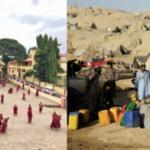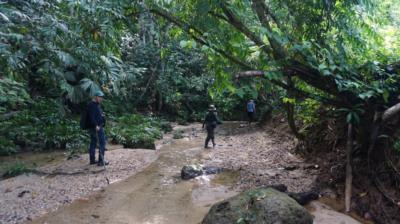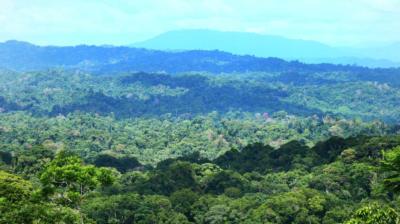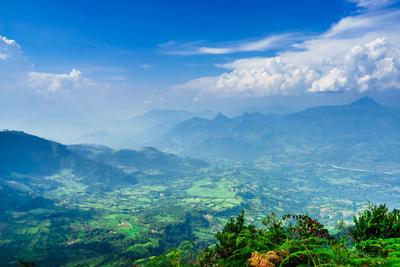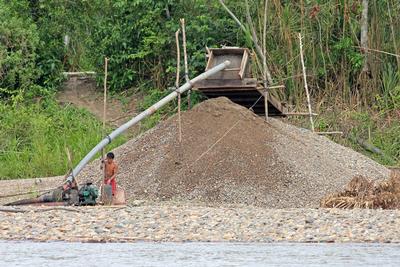Displacement by militarized forest conservation. Evidence from the Artemisa Operation in the post-conflict Colombian Amazon
Changing approaches to deforestation in the Amazon
Are we equipped to tackle climate change and if so, how can we deal with this global crisis? For some countries, the best way to do it is by adopting military actions under the approach known as green militarization. This concept refers to use of military and paramilitary (military-like) actors, techniques, technologies, and partnerships in the pursuit of conservation (Lunstrum, 2014). The Artemisa Operation (2019-2022), announced by Iván Duque, former president of Colombia, is a paradigmatic example. The Colombian Armed Forces were assigned to protect the tropical forests against environmental threats, particularly deforestation, from armed non-state actors (ANSAs). These actors, predominantly located in the country’s Amazon rainforests, include insurgencies, organized criminal groups, and post-paramilitary groups. It should be noted that no other South American army has used a similar number of troops to combat environmental degradation in the Amazon.
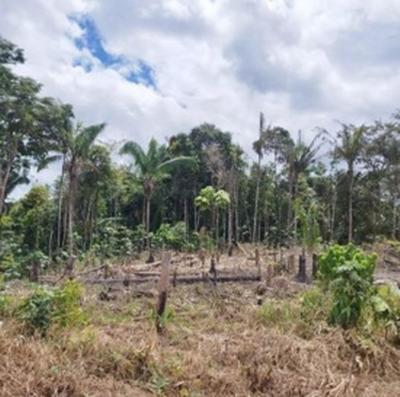
Although the declaration received international community support as well as the funding of Western philanthropists, no academic research has analyzed the negative results that this war implied for local communities. What are these insidious consequences? While there are several forms of violence against those who inhabit the contours of the main natural parks of the Colombian Amazon (Tinigua, Macarena, Picachos, and Chiribiquete), I will focus on the displacement because it is one of the most extreme manifestations of what scholars have coined as green violence, which refers to the violence carried out under the auspices of protecting nature: forced displacement of local communities and Indigenous peoples in order to create protected areas (Büscher & Ramutsindela 2016).
Artemisa was the greatest military campaign that a single country has devoted to protect the Amazon rainforest in recent years (Corredor-Garcia & Lopez, 2023). I want to emphasize, however, that Artemisa’s results deserve a critical analysis given the collateral damages that were provoked against ethnic and vulnerable populations: campesinos and indigenous communities. These populations, who depend on the land and engage in traditional slash-and-burn agriculture are construed as deforesters and, in the most severe case, equated with "terrorists", as former Minister of Defense, Diego Molano, used to call them (Corredor-Garcia & López, 2023). Some of the campesino families were accused of several environmental crimes, including "ecocide", a recently new criminal offense in the Colombian penal code. As a result, these historically vulnerable communities were systematically targeted and displaced by the Armed Forces during Artemisa.
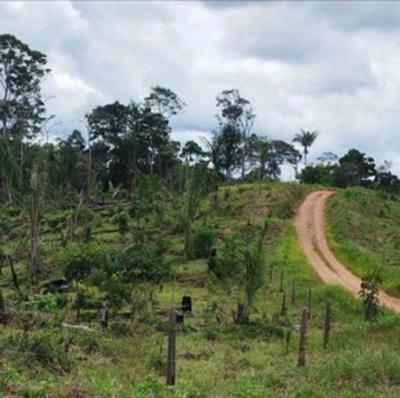
Artemisa Operation - a military response to deforestation
Colombia has experienced deforestation for decades. Between 2003 and 2021, 3 million hectares of forest were lost. At least 50% occurred in the Amazon. However, the military response to deforestation began in the 2010s, as a result of four factors: first, the end of the conflict with the Revolutionary Armed Forces of Colombia (FARC); second, the legal decisions to protect the Amazon; then, the enlargement of existing natural national parks; finally, the militaristic policy of President Iván Duque (2018-2022).
First, the signing of the Peace Agreement between the Colombian government and the FARC in 2016 meant the end of conflict with this insurgency as well as the loss of rebel control over large areas in the Amazon and other parts of Colombia. The agreement considered the environment on the peace agenda and, therefore, favored the inclusion of environmental concerns as national security issues during the transition phase through the new military doctrine known as Damascus. Nevertheless, official reports of the Institute of Hydrology, Meteorology and Environmental Studies (IDEAM, 2020) as well as academic articles (Prem et al., 2019; Clerici et al., 2020; Ganzenmüller et al., 2022) drew attention to the transformation of the Colombian Amazon into a deforestation hotspot as an unintended consequence of the post-conflict scenario. Once the FARC left these places, other ANSAs who remained active in the conflict tried to achieve territorial control of the Colombian Amazon.
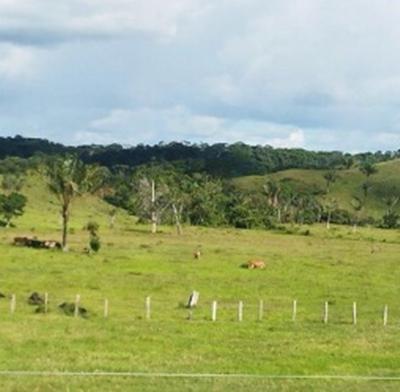
Additionally, the military treatment of deforestation has three legal roots. On the one hand, in April 2018, the Supreme Court of Justice ruled the Amazon as an entity "subject of rights", holder of protection, conservation, maintenance, and restoration by the State and the territorial entities that comprise it. On the other hand, the Special Jurisdiction for Peace, a body of the transitional justice mechanism, identified the environment as "a silent victim of the armed conflict" in June 2019. Finally, Law 2111 of 2021 created new environmental crimes – and, by extension, new criminals – such as deforestation, which did not exist in Colombian jurisprudence before.
A third reason behind the green militarization approach adopted by the Colombian government is the recent expansion policy of natural parks by President Juan Manuel Santos (2010-2014; 2014-2018), followed by Iván Duque. However, these decisions were implemented without considering that thousands of families had been settled for several years in areas surrounding the parks. Many residents did not know that their homes were suddenly located in natural park areas and only found out through Artemisa.
Finally, President Duque, an opponent of the Peace Accords and a representative of the far-right Democratic Center party, adopted a militaristic approach to combat environmental problems during his administration. After the increase in deforestation rates in 2016, Duque announced in April 2018 the need to stop the "deforestation hemorrhage" through Operation Artemis, a joint campaign between the Public Force, Ministry Environment, Prosecutor's Office, National Natural Parks, and other entities. Despite the various actors that participated in this campaign, Artemisa was essentially military and punitive. 23,000 men of the Public Force were deployed to "protect" the four main natural parks in the Arc of Deforestation: Tinigua, Macarena, Picachos, and Chiribiquete.
Subsequently, Duque launched a new conflict in 2021 by coining it as the "war against deforestation" (Corredor-Garcia, & Lopez, 2023). This conflict must be understood as both a discourse and a practice. The State mobilized at least 10% of the Army and used its entire arsenal to persecute the new enemy of the Colombian conflict: the deforester. These military units include 23000 soldiers 10 high mountain battalions, a brigade against drug trafficking, a brigade against illegal mining, as well as coast guard units, marine infantries and members of the National Police. This war served to renew the previous wars waged by the Colombian state (communism, drugs, and terrorism) under similar counterinsurgency doctrines (for more information see: Corredor-Garcia & Lopez, 2023). In other words, the State found in deforestation a new narrative to justify its military presence in areas traditionally contested by ANSAs and local communities. I argue that Artemisa is responsible for serious human rights violations to campesinos and indigenous communities living in the contours of the natural parks. Artemisa evidenced the transformation of the narco-terrorist or narco-cultivator narrative to the deforester (Ciro, 2021), a new threat of the country’s post-conflict scenario (Corredor-Garcia & Lopez, 2023).
The deforester: the new enemy that must be defeated
While Artemisa was the State response to an environmental problem, I argue that this military campaign not only failed to reduce deforestation, but also triggered socio-environmental conflicts with campesinos and indigenous communities. In its three years of operation, Artemisa deployed 21 phases in the natural parks of the Amazon. However, deforestation increased from 158,894 hectares in 2019 to 174,103 in 2021 (Mongabay, 2022). The spatial concentration of these military actions took place in four natural parks located in the upper side of the Colombian Amazon, which corresponds only to 3% of the country’s total deforestation area in the Amazon. What does explain this geographical concentration in such a small portion of the country? One of the most convincing explanations is that these parks’ areas coincide with previous wars that occurred predominantly in the rural areas of the country’s long-standing internal conflict (communism, drugs, and terrorism). It is not a surprise, then, that the State has failed in consolidating territorial control in these disputed areas.
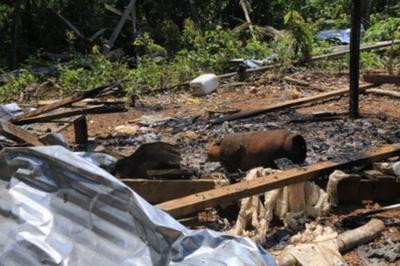
Stigmatization, judicialization, threats, and displacement are among the insidious consequences that Artemisa carried out to historically vulnerable communities. Why did the Colombian army target these communities? The Armed Forces are known for combating what they call "the internal enemy", referring to groups such as insurgents, drug traffickers, and terrorists. However, the logic of the internal enemy has historically shaped how the State criminalizes its communities by framing all campesino behavior as illegal activities (Acero & Thomson, 2022; Tobón, 1998). And once again, the creation of the "deforester" as new internal enemy allowed the State to attack all the inhabitants of the natural parks without any distinction between civilian population or combatants. Since every occupant of these territories was an alleged deforester, the Armed Forces enforced forced displacement of campesinos and indigenous communities.
Landscapes of exclusion: How Artemisa promoted forced displacement in the Amazon
Existing studies have found that state-led conservation programs have actively shaped landscapes of exclusion and destruction, where peasants' erasure – both political and material – has been justified (Bocarejo & Ojeda, 2016, p.176). I claim that Artemisa is the ultimate manifestation of the landscapes of exclusion in the Amazon as it threatened local communities living in the natural parks. In July 2022, I personally went to Tinigua, one of the natural parks where the deforestation hotspots are located, to interview campesinos and indigenous populations affected by Artemisa.
When asked about the campaign, a campesino told me that Artemisa’s operations promoted land dispossession and displacement of people by dynamiting their houses. He added that the Armed Forces capture civilians, accuse them of deforestation and other environmental crimes, and take them in helicopters to judicialize them. This testimony is similar to others that I heard during the fieldwork. Many interviewees seemed preoccupied with what could happen to them after one of the military operations executed in September 2021, El Triunfo, Chiribiquete Natural Park, a neighboring natural park located within Caquetá and Meta's boundaries.
This operation was known for being one of the first actions in which the Armed Forces captured people living in these territories since 1990. They knew that they could be captured and prosecuted by the mere fact of living in these territories. It did not matter how long they had been living in these places. It only mattered that they were "occupying" natural park areas. While some of them were displaced after their houses were dynamited, others moved away after the threats of the national authorities.
Local communities were petrified by the Armed Forces' violent operations in natural parks. One of these military actions in Chiribiquete Natural National Park killed one campesino on March 5, 2022. Subsequent military actions captured indigenous families and accused them of environmental crimes like damage to natural resources and ecocide, invasion of areas of special ecological importance, and illegal use of natural resources. In other words, instead of targeting the main actors driving deforestation, the Armed Forces chose to fight against local, vulnerable communities that depend on the land to subsist.
One remarkable example is the case of Reinaldo Quebrada Quilcué, a governor of La Esperanza indigenous reservation in San Vicente del Caguán, Caquetá. According to the Colombian General Prosecutor Office, Reinaldo was the main "ecocide and deforester of Chiribiquete Natural Park". Colombian authorities charged him with the crimes of kidnapping for extortion; promotion and financing of deforestation; financing of invasion of areas of special ecological importance; and manufacturing, trafficking, and possessing firearms or ammunition. Although captured on April 04, 2022, Reinaldo’s legal situation remains compromised as he is still in jail without any hearing.
Consequently, the number of displaced campesinos increased substantially after these initial operations. While there are no official numbers of the displacement carried out by Artemisa, independent media outlets, NGOs, and other organizations collected testimonies of civilians displaced by these military actions. Dejusticia, one of the most respected think tanks specializing in human rights, stressed the criminalization of campesinos that Artemisa promoted. Moreover, journalistic sources proved that Colombian authorities promised to release imprisoned local communities under the condition of signing agreements with the State in which they agreed to leave their homes located in the protected areas. Similarly, civil society organizations documented the judicialization of campesino families and the non-return agreements the authorities forced to sign to populations living in the Amazon natural parks (ASECADY, 2021).

The Truth Commission found in 2022 that the human rights violations of Artemisa were not new in the Colombian civil war setting. A report of this institution maintained that the dynamics of violence, the development agendas, and violent State intervention in the war on drugs were being transferred to the war on deforestation (Truth Commission, 2022). As a result, many of these people faced double victimization: initially displaced by the armed conflict, these communities were then displaced by Artemisa's militarization of conserved areas.
Why did the Armed Forces promote displacement among these local communities living in the natural parks? According to Lina Álvarez, director El Cuarto Mosquetero, a local independent media outlet based in Villavicencio, Meta, Artemisa served to justify the militarization of natural parks under the pretext of "preserving and conserving". In reality, the State was less interested in protecting the tropical rainforest than seeking to expand its military presence in areas where the State's territorial control is contested, according to Álvarez.
This is consistent with the rhetoric of the Colombian government. Minister of Defense Diego Molano presented Artemisa as a new strategy to regain territorial control gained by criminal organizations. Molano did not understand that local communities lived in these areas decades ago. Therefore, he considered them environmental destroyers without considering the minimal impact that individuals rather than corporations, ANSAs, and other actors can have on deforestation. In this context, Álvarez claims that living in the enlarged natural park areas transformed campesinos and indigenous communities into subjects of criminal treatment by the State. As a result, this strategy increased the vulnerability of campesino families because they live in areas marked by considerable property appropriation, dispossession, and grazing (Ciro, 2018, 296).
To conclude, Artemisa is the most recent production of what scholars have coined as different forms of dispossession in the name of a resilient future (Camargo & Ojeda, 2016). The State narrative waged a war to supposedly protect conserved areas in the Amazon. Nevertheless, it turns out that Artemisa produced a different outcome than promised. In a nutshell, protecting conserved areas was at the expense of criminalizing, displacing, and dispossessing ordinary citizens.
Reference list:
ASECADY. 2022. Afectaciones al campesinado y a las comunidades étnicas. Análisis del conflicto armado y la conservación de los Parques Nacionales Naturales Tinigua, Macarena, Picachos y Chiribiquete por parte de la Asociación Empresarial Campesinos del Yari Asecady.
Acero, C. & Thomson, F. 2022. ‘Everything peasants do is illegal’: Colombian coca growers’ everyday experiences of law enforcement and its impacts on state legitimacy. Third World Quarterly, 43(11), 2674-2692. https://doi.org/10.1080/01436597.2021.1971517
Bocarejo, D., & Ojeda, D. (2016). Violence and conservation: Beyond unintended consequences and unfortunate coincidences. Geoforum, 69, 176–183. https://doi.org/10.1016/j.geoforum.2015.11.001
Büscher, B., & Ramutsindela, M. (2016). Green violence: Rhino poaching and the war to save Southern Africa’s peace parks. African Affairs, 115(458), 1–22. https://doi.org/10.1093/afraf/adv058
Camargo, A., & Ojeda, D. (2017). Ambivalent Desires: State formation and dispossession in the face of climate crisis. Political Geography, 60, 57-65. https://doi.org/10.1016/j.polgeo.2017.04.003
Clerici, N., et al. (2020). Deforestation in Colombian protected areas increased during post-conflict periods. Scientific Reports Nature Research, 10(1), 1-10. https://doi.org/10.1038/s41598-020-61861-y
Ciro, E. (2021). Buscando nombre para una guerra. La Jornada. https://www.jornada.com.mx/notas/2021/11/08/politica/buscando-nombre-para-una-guerra-estefania-ciro/
Corredor-Garcia, J., & Lopez, F. (2023). The logic of war on deforestation. A military response to climate change in the Colombian Amazon. Alternatives. 1-19. https://doi.org/10.1177/03043754231181741
Ganzenmüller, R., Sylvester, J., & Castro-Nunez, A. (2022). What peace means for deforestation: An analysis of local deforestation dynamics in times of conflict and peace in Colombia. Frontiers in Environmental Science, 10(1), 1–11. https://doi.org/10.3389/fenvs.2022.803368
Lunstrum, E. (2014). Green militarization: anti-poaching efforts and the spatial contours of Kruger National Park. Annals of the Association of American Geographers 104(4), 816-832. https://doi.org/10.1080/00045608.2014.912545
Tobón, W. 1996. ¿Un campesinado ilícito? Análisis Político, 29, 54-62.
